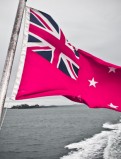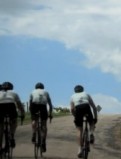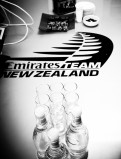The IPO Market
I was asked on my recent trip to New Zealand about the US IPO market. Somewhat fortuitously I received an email from America’s Growth Capital with a good summary. Here is the rub:
The U.S. IPO market thrived in the 1990s, averaging more than 500 IPOs per year over the entire decade. However, as we entered the new millennium, the once vibrant IPO market drastically shrank, not only because of the implosion of the Internet bubble, but also due to the following reasons: i) the market cap threshold of targeted investments for mutual funds increased as these funds ballooned; ii) the most active IPO underwriters either disappeared or moved up-market; and, iii) overzealous regulation and costly litigation significantly deterred both executives and private equity players.
These factors led to the dip in IPO volume that we saw from 2001 – 2003; however, the U.S. market has clearly rebounded with a strong finish in 2006. In Q406, 89 IPOs were priced- the highest quarterly total the market has seen in recent years. 228 IPOs were priced in 2006 on U.S. exchanges, compared to 202 in 2005, an overall increase of 13%. So far in 2007, 48 IPOs have priced, compared to 40 IPOs at the same time in 2006 (as of March 16). The tech IPO market saw 41 deals priced in 2006, the same number as in 2005. Tech IPO filings increased by 35% from 2005 (51) to 2006 (69). Expect substantially more tech IPOs in 2007-2008 compared to the post-bubble doldrums of 30-40 IPOs a year.
We believe that this increase can in part be attributed to an influx of private companies that sat on the sidelines during unfavorable market conditions and are now considering going public. Most are successful later-stage companies with $30-100 million in revenues. While many of these companies need capital for growth or liquidity, they may be unwilling to raise another round of private equity due to unattractive private valuations and often onerous liquidation preferences. In other cases, these companies do not yet want to sell to a strategic acquiror or have not generated a compelling offer. In early 2007, there is now an abundance of private companies that are proven with strong market penetration, established customer bases, and demonstrable growth and profitability (or near-profitability). However, these private companies do not meet the minimum IPO criteria as determined by the bulge bracket banks and traditional large fund IPO investors.
An Economist’s Courtroom Bonanza
Great profile on Kiwi David Teece. The one thing it doesn’t mention is the incredible job he did with Stephen Tindall in creating KEA.
Meet David Teece, renowned expert on lots of things and pioneer of a lucrative consulting niche that has transformed business litigation. The University of California, Berkeley, business-school professor is one of America’s busiest expert witnesses, billing corporate clients as much as $850 an hour for his insights. He has built a publicly traded 1,300-person research shop, LECG Inc., that does much of the legwork for him and other economists, so they can zoom through more assignments.
And this made me smile… “And his New Zealand accent worked nicely on the witness stand; it made him sound erudite without being pompous.”
NZ’s Need For Speed
Echoing Rod’s calls for better bandwidth in NZ, David Cunliffe just issued a report pointing to NZ’s woeful broadband performance.
The Ministry of Economic Development report comparing New Zealand’s telecommunications performance with other OECD countries uses figures from the organisation that show uptake of broadband in June last year was an unchanged 22nd place out of 30 countries.
"While New Zealand’s performance – especially with broadband internet uptake – has improved in absolute terms, we are in a competitive international race and our relative performance has not improved," Cunliffe said.
I don’t believe the issue is in the fat pipes coming in and out of NZ. There is no question that part of the issue rests in the last mile and provisioning of services. Beyond that, there are a ton of issues.
As a visitor to New Zealand I’m constantly amazed at the appaling public and hotel-based Internet services. I just spent a few days at the high-end Sky Tower in Auckland. Great room. Great food. Crap Internet service. Unlimited high-speed Internet at a good price is more important to me than Hotel food.
If I’d been paying I would have checked-out and gone to another hotel. Anyone charging a day-rate and MPS is nuts.
I then got to the airport early figuring I’d get some work done. Still no Internet service out there.
Getting In The Flow
Interesting post on productivity and “getting in the flow”.
1. Clear goals.
To enter the flow state, you need to define a short-term goal. If you’re working on a large multi-session project like a web app, decide your purpose for this single creative session. Be careful not to overqualify your purpose; your purpose should be “an arrow, not a container”. (- Steve Pavlina)
2. A high degree of concentration on a limited field of attention.
3. A loss of self-consciousness, the merging of action and awareness.
4. Distorted sense of time.
5. Direct and immediate feedback; behaviour can be adjusted as needed.
6. Balance between ability level and challenge.
7. A sense of personal control over the situation or activity.
8. Intrinsically rewarding action, so there is an effortlessness of action.
9. Focus of awareness is narrowed down to the activity itself.
That Timesheet Thing Again
Stumbled onto this piece (sub required) from Peter Arnell that hits nicely at what I keep ranting on timesheets and agency billing about. In this case, replace hours billed with request for a full time equivalent employee:
It is time to reconcile archaic FTE accounting with the talent-driven, multidimensional world we live in today. There is more creative doing, more crossing of traditional boundaries, more thinking and contributing by talent who multitask and participate on many levels at once. Great ideas are the cultural currency that clients will profit from in the end, and attaining this level of contribution does not run on a clock or time sheet.
Let’s put a typical staffing allocation formula in terms of MasterCard:
An experienced account director: FTE of 1
A sane creative team: FTE of 3.2
A person with one good idea: PricelessThe goal of clients should be to seek what is priceless at a cost agencies and their talent deserve.
Source: Advertising Age – CMO Strategy – Peter Arnell: Find Value in Results You Cannot Measure





